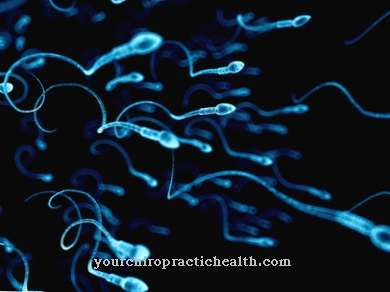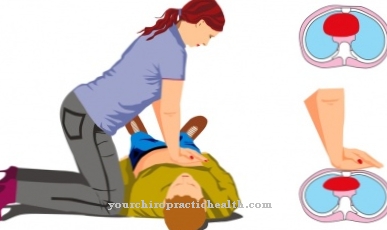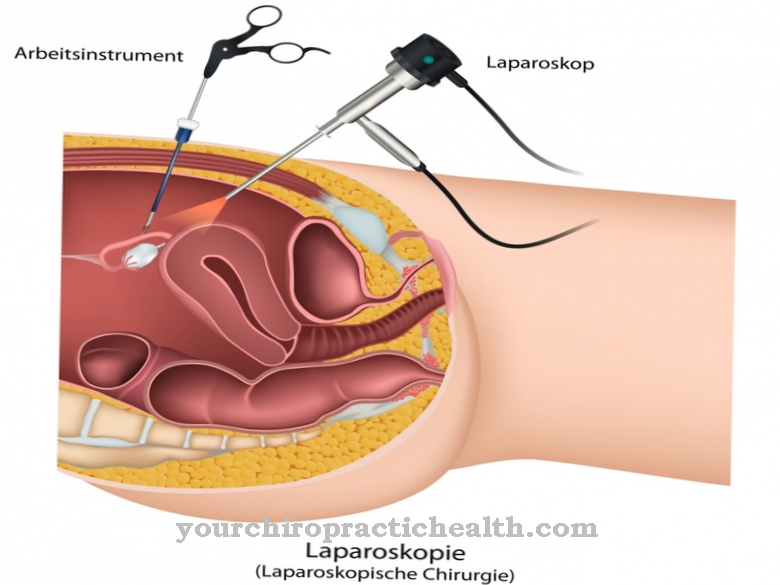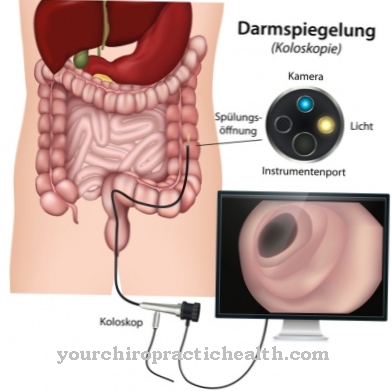Many patients with neurological diseases have behavioral problems, which the technical jargon calls adjustment disorders. The clinical neuropsychology deals with the psychological and physical stress experienced by the affected people.
What is clinical neuropsychology?

Clinical neuropsychology is a sub-discipline of psychology. Psychologists are concerned with the question of why people show certain behaviors and behavior patterns and trace them back to individual experiences.
In addition to "behavioral research", psychology also gets to the bottom of such important questions as how feelings arise, how they affect human behavior, the learning process, mental state and intelligence. It poses the all-important question of how psychosomatic illnesses occur and how they can be remedied. Neuropsychology starts at this point and subjects these problems to a special analysis. She tries to find answers to whether the aforementioned psychological processes are associated with properties or parts of the brain.
Treatments & therapies
Clinical neuropsychology is a sub-area of neuropsychology and examines the causal connections and relationships between behavioral problems, which are considered to be of disease value, and functional disorders of the central nervous system, which are closely related to the activity of the brain. These functional disorders can be traced back to motor skills, perception, attention, memory performance and the higher cognitive functions and abilities.
This sub-discipline does not see the mental and emotional illness and the physiological illnesses and / or complaints on which it is based separately from one another, but rather creates a uniform picture on which the subsequent treatment concept is based. Clinical neuropsychology knows three basic forms of therapy.
- 1) Functional therapy, also known as restitution, focuses on improving or optimizing abnormal behavior on the basis of certain neuropsychological treatment methods.
- 2) The compensation therapy builds the coping ability of the affected individual and enables them to deal with their illness objectively during this therapy. This form of therapy is always used when functional therapy does not bring the desired results.
- 3) Neuropsychologists combine therapeutic approaches with integrative treatment methods. The methods of other psychological treatment principles and procedures from the field of behavioral therapy are combined with our own therapeutic approaches.
Three main components of attention disorder appear conspicuously: processing capacity, selectivity and alertness (alertness, activation). The processing ability is limited and requires the undisturbed flow of the processing speed of information, which must be shared as well as in parallel, with conscious attention. Another variant is controlled and automated processing. The processing speed is the basic variable of a large number of cognitive processes that involve a complex stimulus and reaction process.
Split and parallel processing is more complicated because multiple tasks must be performed at the same time. These processing processes can result in different degrees of differentiation of the incoming information. The controlled recording of information takes place on an automated basis and with a lower processing speed. With selective perception, a person is able to consciously and unconsciously distinguish the flood of incoming information to which he is exposed on a daily basis according to importance and unimportance. He focuses on the essentials and neglects secondary and irrelevant information.
In colloquial language, the term ability to concentrate is used instead of alertness. It is about maintaining certain attentional performances over a longer period of time, which are usually controlled. The phasic attention focuses on the reception of short-term incoming information, the aim being to process this new and unexpected stimulus as well as possible. The syndrome-like disorder of neglect leads to tactile, visual and acoustic complaints. The patients show a one-sided neglect of the extremities (hemiakinesis), incorrectly assign stimuli locally (allesthesia) and neglect one half of the space.
Your insight into the disease (anosognosia) is not available. In particular, they suffer from impaired visual perception, auditory perception disorders, motor disorders, loss of control, hallucinations, thought disorders, apraxias, aphasias, amusias, amnesias and various types of dementia. The affected people are not able to correctly process colors, sizes, consistencies, tonality, noises, language, music, speed and other complex stimuli. They can have a visual field impairment, a lack of sense of direction, limited intelligence, learning difficulties, reading, writing and arithmetic weaknesses and memory loss (traumatic brain injury).
You can find your medication here
➔ Medicines to calm down and strengthen nervesDiagnosis & examination methods
Headaches and migraines can be the first signs. More than any other organ, the brain is dependent on an undisturbed blood and oxygen supply. Vascular diseases (circulatory disorders) are a possible indication of an impending stroke, cerebral hemorrhage and stroke. Infectious diseases of the nervous system in the form of viruses and bacteria are the preliminary stages of meningitis. If not only the meninges but the brain are directly affected, encephalitis is present.
Multiple sclerosis is an inflammatory disease of the spinal cord and brain that is caused by a dysregulation of the immune system. Those affected suffer from cognitive perception disorders and muscle wasting, which in the chronic stage causes permanent damage and disabilities (secondary chronic progressive multiple sclerosis). Brain tumors, muscle diseases (muscle wasting, muscle weakness), diseases of the peripheral nervous system and neurodegenerative diseases (chronic brain diseases without inflammation and circulatory disorders) provide further suspicious factors in the diagnosis.
The first step on the way to therapy is the anamnesis, which is done by questioning the patient. The laboratory examination of blood and liquor (nerve and brain water) follows the neurological diagnosis. In this way, all types of pathogens, inflammation parameters and the diseases mentioned above can be determined. Further examinations include ultrasound of the vessels supplying the brain, electrophysiological diagnostics in the form of derivation of brain waves (EEG), measurement of nerve conduction in the peripheral nervous system (electroneurography), derivation of electrical muscle activity (electromyography), measurement of nerve conduction in the spinal cord and brain (evoked potentials), Registration of eye movements (electrooculography) and functional diagnostics of blood pressure and cardiac activity.
Diagnostic imaging is indispensable for the neurological findings: regular x-ray procedures, myelography, computed tomography (CT), angiography and magnetic resonance imaging (MRI). In the case of inflammatory brain diseases and brain tumors, tissue removal (tumor and brain biopsy) is performed. A muscle biopsy is done for muscle disorders. Various drug therapies are now available for multiple sclerosis, which not only have a positive effect on the symptoms but also on the overall course.
With improved treatment methods, the prognosis for brain tumors has improved significantly. Special departments in the clinics (stroke units) professionally take care of patients with stroke, stroke and cerebral haemorrhage. Neuroleptics are administered for migraines, myasthenia and Parkinson's disease. A prerequisite for successful therapy is the coordinated collaboration between neurologists, psychologists, neurosurgeons, cardiac surgeons and radiation doctors.

















.jpg)







.jpg)


